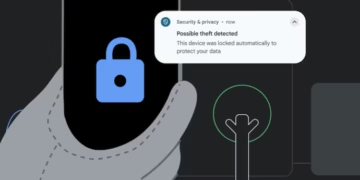The rise of quantum computing is shaking up the security systems that keep digital currencies safe. Quantum machines can tackle complex calculations way faster than traditional computers, which puts the cryptographic methods behind cryptocurrencies under a new kind of pressure. With this leap, it’s worth taking a hard look at how quantum technology could shake up blockchain security—and what we might actually do about it.

With digital assets getting more mainstream, it’s becoming harder to ignore the shifting relationship between quantum computing and crypto. Digging into what quantum tech can do now, and what it might do soon, helps us see the risks and the scramble to shore up our defenses. Anyone even a little interested in the future of secure digital finance should probably be paying attention.
Key Takeaways
- Quantum computing puts today’s cryptographic protections for cryptocurrencies at risk.
- There’s a push to develop security measures that can stand up to quantum threats.
- Staying aware of these changes is crucial for digital currency security going forward.
Grasping How Quantum Computers Work
Quantum computers don’t play by the same rules as classical ones. They use qubits instead of regular bits. While bits are stuck as either 0 or 1, qubits can be both at once, thanks to quantum mechanics—that’s superposition. They also get tangled up with each other through entanglement. It all adds up to a serious jump in computing power for certain problems.
Quantum computers can run special programs called quantum algorithms that blow traditional methods out of the water. The big one everyone talks about is Shor’s algorithm, from Peter Shor. It lets quantum machines break down huge numbers into their factors really fast. That’s a problem for encryption systems like RSA and elliptic curve cryptography (ECC), both of which rely on those math problems being too tough to crack.
- Quantum computers can factor massive numbers quickly.
- They solve math problems that keep digital security intact, like discrete logarithms.
- Quantum tech is moving fast—what sounded like science fiction is inching closer to reality.
- Current cryptographic methods might not survive once quantum machines are powerful enough.
- We don’t have fully usable quantum computers yet, but the threat feels real.
Weaknesses in Today’s Encryption Methods

Cryptocurrencies lean hard on cryptographic algorithms like RSA and Elliptic Curve Cryptography (ECC) to keep transactions locked down and the blockchain trustworthy. These systems are built on math problems that stump classical computers. But quantum computers use different tricks that could break those problems wide open, making today’s encryption look shaky.
- RSA is all about the difficulty of factoring huge numbers.
- ECC relies on solving elliptic curve problems, which are no picnic for regular computers.
- Quantum algorithms like Shor’s can blow through both, fast.
- Digital signatures—used to prove a transaction’s legit—could get faked.
- If private keys get cracked, cybercriminals could swipe digital assets or pretend to be someone else.
If quantum computing reaches the power levels people worry about, public-key cryptography and the algorithms protecting crypto could buckle. That would hit privacy and information security across decentralized networks. Getting ready for this means working on new encryption systems built to stand up to quantum attacks and keep communications safe.
Advances and Safeguards Against Quantum Risks
To shield cryptocurrencies from quantum threats, folks are hustling to build quantum-safe encryption. Researchers are deep into post-quantum cryptography (PQC)—algorithms that can stand up to quantum attacks. The idea is to keep digital assets safe, even as quantum machines get stronger.
One approach is hybrid cryptographic systems that mix old-school encryption with quantum-resistant methods. It’s a way to bridge the gap while everyone upgrades.
Rolling out these new protections isn’t simple. It takes community buy-in and coordinated upgrades across platforms. The National Institute of Standards and Technology (NIST) is leading the charge by testing and standardizing new quantum-secure methods. Their work is shaping what’s next for cryptographic safety.
More research and public awareness are crucial, too. Keeping up with quantum cryptography developments is honestly a must for anyone who wants to trust digital currencies in the years ahead.
| Key Focus Areas | Details |
|---|---|
| Post-Quantum Cryptography (PQC) | New algorithms designed to resist quantum attacks |
| Hybrid Systems | Combining classical and quantum-resistant encryption |
| Standardization | NIST leads the process of verifying and approving PQC |
| Community Collaboration | Essential for implementing new security standards |
| Education | Increasing knowledge about quantum threats |
How Cryptocurrencies Will Adapt to Quantum Computing
The rise of quantum computing is starting to cast a long shadow over blockchain security—especially for cryptocurrencies like Bitcoin and Ether. Quantum machines might one day crack the cryptographic shields that keep wallets and transactions safe. If people keep reusing addresses, it just gives attackers more chances to link things together and cause trouble.
To stay afloat, cryptocurrencies will have to shift toward quantum-resistant cryptographic methods. That means reworking digital signatures and hashing functions, the stuff that keeps blocks safe and stops fake transactions from sneaking through. It’s going to take real teamwork and active research to figure out which fixes actually work in practice.
For anyone holding or trading crypto, it’s worth keeping an eye on these risks—and on what’s being done to address them. Honest updates about security changes go a long way toward building trust. As technology advances, it feels like the real challenge will be finding the sweet spot between innovation and protection. Maybe the sooner cryptocurrencies adapt, the better their odds in a quantum-powered future.





































